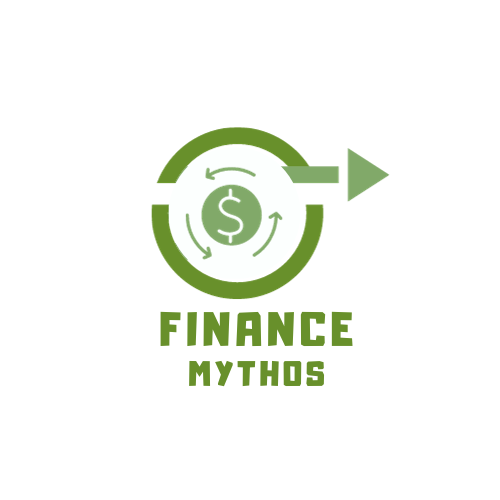Table of Contents
ToggleConquer Cash Flow Crunch: Plug the Leaks, Boost Inflows, and Thrive!
Are you feeling the squeeze of late payments and rapid outflows? You’re not alone. Many businesses struggle to keep cash flowing smoothly, impacting their ability to invest, grow, and thrive. But fear not! Here’s a redefined and interactive guide to help you slow down outflows and speed up inflows, leaving you with more financial breathing room:

Boost Inflows & Secure Funding:
Become an “Aging Accounts Receivable” Pro: Imagine this report as your financial crystal ball. Run it regularly to uncover who owes you money and how far behind they are.
Don’t Let Overdue Debts Linger: Prioritize collecting from slightly late payers first, like catching a cold before it turns into pneumonia. Gradually work your way up to the older, more stubborn accounts.
Early Payment Incentives: Sweeten the deal for early birds! Offer discounts or rewards to customers who settle their invoices promptly. This win-win strategy boosts your cash flow and strengthens client relationships.
You’ll be surprised how a small carrot can lead to faster rabbits!
Funding Options:
Short on cash? Explore these solutions to bridge the gap:
Invoice factoring: Sell your unpaid invoices to a third party for immediate cash, albeit at a discount.
Short-term loans or lines of credit: Access quick funding to cover temporary cash flow needs. Evaluate interest rates and repayment terms carefully
Identify & Stop Outflow Leaks:
Time is Money: “Time is money”, and your cash flow is no exception. Are you inadvertently turning your business into a financial museum by paying bills far ahead of their due dates? This seemingly harmless practice can unintentionally lock up crucial cash, slowing down your ability to invest, grow, and adapt.
Embrace the Power of Due Dates: Implement a company-wide policy of paying on due dates, not before. This keeps your cash flowing freely for other needs.
Negotiate Payment terms: Renegotiate payment terms with key vendors. Aim for quarterly or monthly payments instead of large, lump-sum expenses. This spreads your cash flow and eases the burden.
Embrace Automation:
Imagine a world where invoices fly out the door, payments flow seamlessly, and financial data dances to your fingertips. Automation tools and financial software are your key to unlocking this magic. Explore options for:
- Automated invoicing and payment processing: Save time and eliminate errors, ensuring faster payments and happier customers.
- Real-time financial dashboards: Gain instant insights into your cash flow, making informed decisions on the fly.
- Automated reminders and collections: Never miss a payment again. Let technology gently nudge your clients towards timely settlements.
Technology is your friend: Leverage automation and data insights to make smarter financial decisions.
Expense Explorer: Hunt Down Hidden Costs:
Big Ticket Busting: Identify your biggest expense categories like payroll, software subscriptions, and marketing. Consolidate roles, outsource tasks, and negotiate better deals with vendors. Remember, every penny saved is a penny earned!
Performance-based wage: Monitor your wages as a percentage of revenue. Are they creeping up? Explore skill-based pay adjustments or performance-based incentives to control labour costs while keeping your team motivated.
Track the ROI: Analyse the return on ad spends (ROAS) for each marketing channel. Ditch the duds and double down on channels that deliver the most bang for your buck. Be a data-driven Jedi!
Sharpen Your Pricing: Regularly assess your pricing strategy. Stagnant revenue? Consider adjustments. Analyze competitors and test new pricing structures with a small group for feedback. Remember, the right price can unlock a revenue goldmine!
Software and Subscription Audit: Conduct a ruthless audit of your software and subscriptions. Cancel unused tools and reduce seat licenses where possible. Remember, you’re only paying for what you actually use, not digital cobwebs!
Feedback Mechanism: Understand why customers leave. Talk to recent churners and identify common pain points. Track churn reasons and implement swift fixes to keep them flowing in, not out!
Real-life Cash Flow Success Story: From Struggling to Soaring
Zerodha: Discount Broking Disruptor:
Challenge: Traditional brokerage firms’ high fees and complex interfaces.
Solutions:
Lean team: Building a highly skilled but compact team, relying on technology automation for efficiency.
Open-source software: Utilizing freely available tools and customizing them for their specific needs.
Content marketing: Educating potential investors through blogs, webinars, and social media, reducing marketing costs.
Subscription-based pricing: Offering flat-fee brokerage plans, breaking away from traditional per-trade charges.
Community focus: Building a strong online community with forums and events, increasing user engagement and loyalty.
Results: Zerodha became India’s largest stockbroker by number of accounts, demonstrating the power of technology, transparency, and community building.
These are just a few examples, and many other companies are implementing similar strategies. The key takeaway is that proactive cash flow management and customer-centricity are crucial for success, regardless of the industry.
Remember: This is your journey. Experiment, track results, and adapt these strategies to fit your unique business needs. By taking control of your cash flow, you’ll unlock greater financial stability and pave the way for sustainable growth.
FAQs
Q-1 How to find Net Cash Flow ?
Finding Net Cash Flow: Step-by-Step with an Example
Step 1: Gather information:
- Identify the period for which you want to calculate net cash flow (e.g., month, quarter, year).
- Obtain the company’s cash flow statement for that period.
Step 2: Analyze the CF statement:
The statement will be divided into three sections:
- Operating activities: Cash inflows and outflows related to core business operations (e.g., sales, purchases, salaries).
- Investing activities: Cash inflows and outflows related to buying and selling assets (e.g., equipment, property).
- Financing activities: Cash inflows and outflows related to raising capital (e.g., issuing shares, taking loans).
Step 3: Calculate net cash flow:
- For each section: Add up the individual cash inflows and outflows to get the net CF for that section.
- Combine section results: Sum the net CF from each section to get the total Net CF.
Formula:
Net Cash Flow = Operating Cash Flow + Investing Cash Flow + Financing Cash Flow
Example:
Imagine you’re analyzing a company’s cash flow statement for the last quarter:
| Section | Inflows | Outflows | Net Cash Flow |
|---|---|---|---|
| Operating Activities | $100,000 | $80,000 | $20,000 |
| Investing Activities | $30,000 | $50,000 | -$20,000 |
| Financing Activities | $80,000 | $40,000 | $40,000 |
Total Net Cash Flow: $20,000 + (-$20,000) + $40,000 = $40,000
Interpretation:
- This company has a positive Net CF of $40,000, indicating it generated more cash than it spent during the quarter.
- While investing activities resulted in a negative CF ($20,000 outflow), the positive CF from operating and financing activities compensated for it.
Remember:
- Initial investments are usually excluded from the calculation.
- Depreciation expense might be added back to operating cash flow.
- Always consider the context and purpose when interpreting net cash flow.
Q-2. Create an example of a situation where there is a negative cash flow example
You and your classmates are hungry entrepreneurs running a “Pizza Party” business.
Your goal is to throw the best pizza parties in town and make a profit!
Possible Reasons for Negative Cash Flow:
- High initial costs: Setting up a business often requires upfront investments (buying equipment, marketing) that lead to negative cash flow initially.
- Slow sales: It might take time to build a customer base, leading to lower income than expected.
- Unexpected expenses: Equipment breakdowns, higher ingredient costs, or unforeseen party mishaps can throw off your budget.
Now it’s your turn! Share in the comments below:
- Share your biggest cash flow challenges in the comments.
- Which tips or tricks have worked best for you?
- What other questions do you have about optimized your cash flow?

Jugaad on Two Wheels: The Hilarious Bike Parcel Hack in Karnataka
The Great Karnataka Bike Parcel Hack: A Jugaad Masterclass #RapidoParcel: In a creative yet controversial move, ride-hailing platform Rapido has found a way around Karnataka’s

Denmark’s Digital Sovereignty Revolution: Linux and LibreOffice Lead the Way
Introduction to Denmark’s Bold Move In June 2025, Denmark’s Ministry of Digital Affairs made headlines by embracing digital sovereignty, ditching Microsoft Windows and Office 365

🏏Sports as a Business Strategy: Insights from Vijay Mallya’s RCB Ownership
🧠 Sports as a Business Strategy (Tool) In modern business, few platforms offer better engagement and emotional connection than sports. From football clubs in Europe
Lorem ipsum dolor sit amet, consectetur adipiscing elit. Ut elit tellus, luctus nec ullamcorper mattis, pulvinar dapibus leo.

